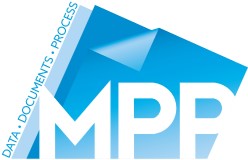
Did you know that the average employee spends 30% of their time just searching for information? That’s almost a full day per week wasted on inefficiencies. And the reality is even worse—many businesses don’t realise how much time, money, and productivity is slipping through the cracks due to outdated processes, inefficient workflows, and unnecessary manual tasks.
We hear it all the time from COOs and Operations Directors:
-
- “We have great teams, but things just take longer than they should.”
-
- “Our internal processes are holding us back, but no one knows where to start fixing them.”
-
- “We’ve invested in digital tools, but we’re still not seeing the efficiency gains we expected.”
The truth is, inefficiency isn’t just frustrating—it’s expensive. A lack of structured workflows, poor document management, and disconnected data can result in operational waste, decision-making delays, compliance risks, and lost revenue opportunities.
The good news? There are quick wins you can implement right now. With the right document management and AI-powered solutions, you can eliminate bottlenecks, streamline collaboration, and empower your teams to work smarter—not harder.
Here’s how forward-thinking companies are making fast, measurable improvements in their operations without unnecessary complexity.
1. Find Files in Seconds, Not Hours
The Problem: How many times have your employees wasted valuable time hunting for a document, buried in email threads, shared drives, or outdated filing systems? Studies show that knowledge workers spend an average of 9.3 hours per week searching for information.
The Solution: With AI-powered search, companies can reduce document retrieval time by 90%. Advanced document indexing and intelligent search capabilities mean that employees can find the right information in seconds instead of hours.
🔹 Example: A UK-based engineering firm cut its average search time for technical specifications from 15 minutes to under 30 seconds, saving 400+ hours per month across teams.
✅ Quick Win: Implement AI-driven document search tools that automatically categorise and tag documents for faster retrieval.
2. Ditch the Manual Data Entry & Repetitive Admin Tasks
The Problem: HR teams, finance departments, and sales operations staff waste hours every day on manual data entry, approvals, and repetitive administrative tasks—taking them away from higher-value work.
The Solution: Automating HR and sales order processing can cut admin time by up to 80%, reducing human error and speeding up workflows. Intelligent automation tools extract and process data in real time, ensuring accurate and compliant record-keeping.
🔹 Example: A mid-sized financial services company implemented AI-driven invoice processing, reducing their approval cycle from 7 days to just 24 hours, freeing up finance teams for more strategic work.
✅ Quick Win: Automate repetitive processes like HR onboarding, invoice approvals, and sales orders using AI-powered workflows.
3. Prevent Document Chaos with Standardised Templates
The Problem: A lack of consistency in document creation leads to errors, compliance risks, and wasted time revising and correcting mistakes. Different teams using outdated templates or incorrect formatting can slow down approvals and create operational confusion.
The Solution: Using standardised document templates and automation can reduce document errors by 60%, ensuring that every contract, proposal, or compliance document meets the right standards.
🔹 Example: A law firm streamlined its document creation process by integrating automated templates, reducing contract turnaround time by 50% while ensuring legal accuracy.
✅ Quick Win: Introduce pre-approved, automated document templates to reduce errors and improve efficiency across departments.
4. Get Answers, Not Just Data: Optimise Resource Planning with AI
The Problem: Most businesses collect huge amounts of data, but decision-makers struggle to turn it into actionable insights. Without predictive analytics, operations leaders miss opportunities to optimise resources and reduce waste.
The Solution: AI-driven analytics tools help businesses identify inefficiencies, predict demand fluctuations, and optimise operational planning—reducing waste by up to 25%.
🔹 Example: A manufacturing company reduced supply chain bottlenecks by 30% using predictive analytics, ensuring that inventory levels matched demand without overstocking.
✅ Quick Win: Use predictive analytics to track operational inefficiencies and adjust workflows dynamically based on real-time insights.
5. Make AI Your Secret Weapon—Not a Headache
The Problem: Many COOs see the potential of AI and automation but hesitate to implement it due to complexity and integration concerns. The fear of disrupting current operations leads to missed opportunities for efficiency gains.
The Solution: With the right implementation strategy, AI is surprisingly simple to integrate. Businesses that partner with experts to introduce AI-powered workflows see faster adoption, increased productivity, and minimal disruption.
🔹 Example: A professional services firm introduced AI-driven workflow automation for compliance reporting, reducing manual workload by 65% while improving audit accuracy.
✅ Quick Win: Work with trusted partners who understand your business needs and can tailor AI-powered solutions to fit seamlessly into your existing workflows.
Conclusion: Operational Efficiency is Within Reach
Most businesses don’t realise how much inefficiency is baked into their daily operations—but fixing it doesn’t have to be overwhelming. With the right technology and a trusted partner, COOs can quickly unlock real improvements in productivity, cost reduction, and overall business agility.
With over 30 years in the industry, MPP Digital helps businesses streamline processes, reduce costs, and integrate AI-powered efficiency solutions without the complexity.
🔹 Want to discuss how we can unlock quick wins and long-term efficiency for your team?
📩 Email: [email protected] 🔗 Connect with Graham or Julian on Linkedin to find out more.
